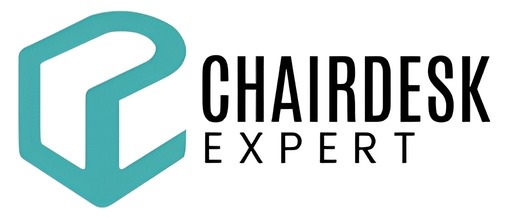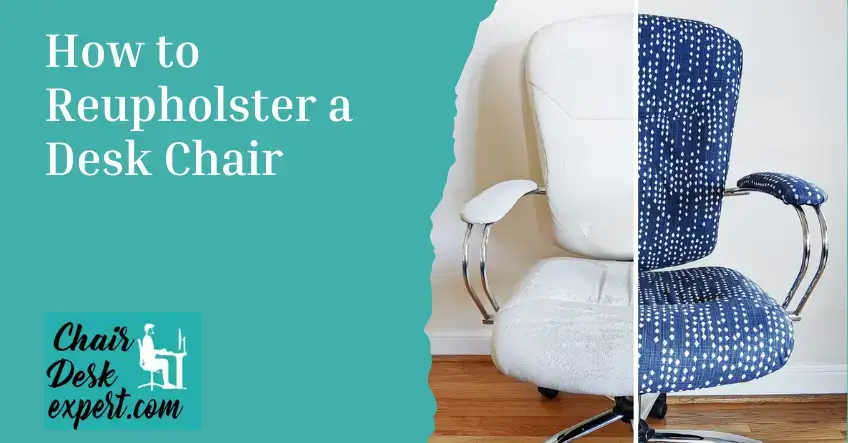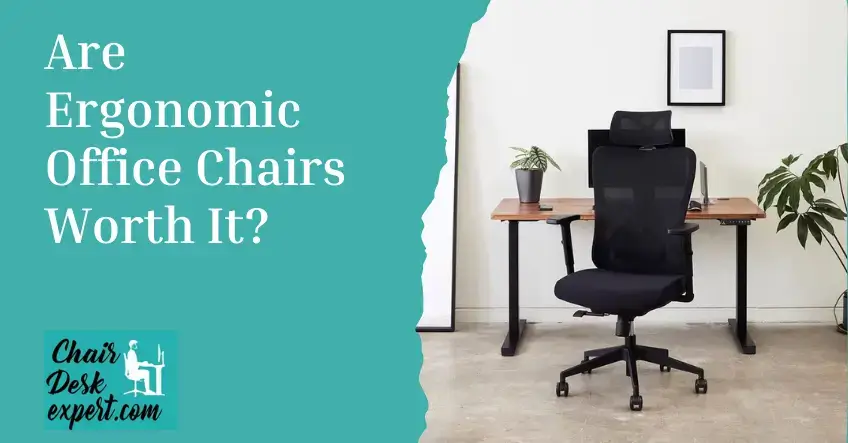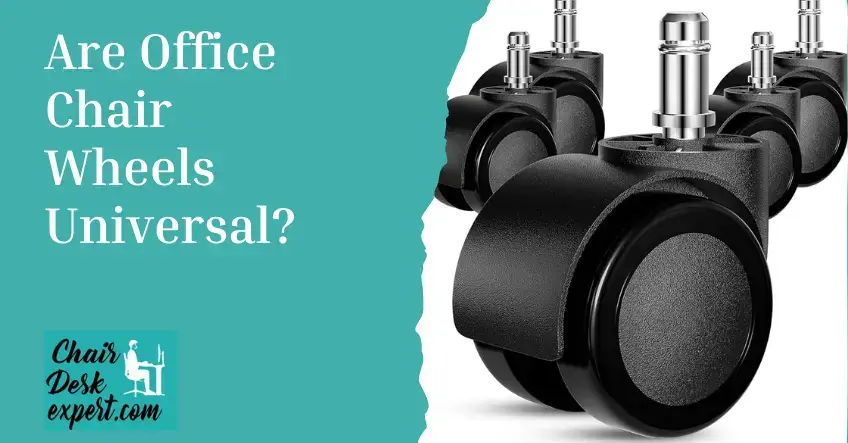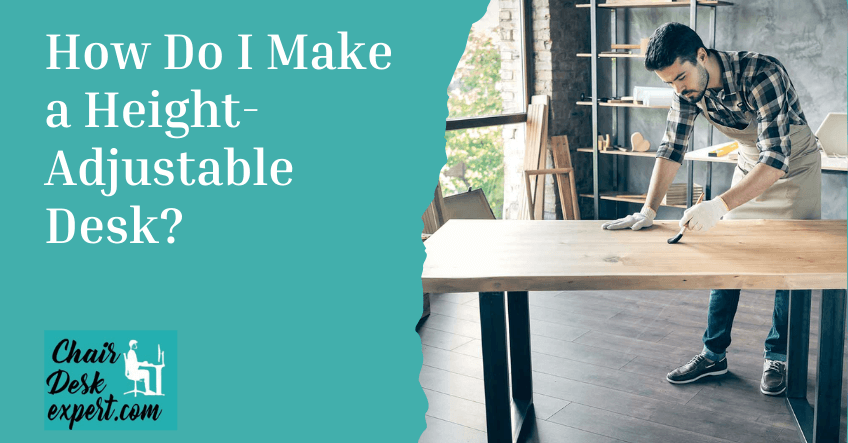Individuals adopt different sitting types when they sit on chairs, depending on factors such as activity, comfort, and ergonomics.
These various sitting postures, from reclining to half-crossed legs, can help one enjoy seated comfort and posture. Let us look at some common sitting positions that people choose when seated on chairs.
The Importance of Proper Sitting Posture
Sitting posture is not just about comfort; it’s about maintaining your health and well-being. Poor sitting habits can lead to a range of issues, from back pain and muscle strain to more severe problems like herniated discs and poor circulation.
Failing to maintain proper posture during sitting has negative consequences for body functions over time. Understanding the right sitting positions can help prevent these issues and enhance your overall productivity and comfort.
Overall, maintaining good posture and avoiding prolonged periods of slumped backward sitting is crucial for preserving spine health, preventing musculoskeletal issues, and promoting overall well being.
Taking frequent breaks that involve stretching, moving around, or changing sitting positions can help reduce the impact of prolonged sitting.
What Is An Ideal Sitting Posture?
Physical habits affect our health; the most crucial is sitting posture. For instance, no particular posture can be termed the best sitting posture for all individuals.
People’s sitting positions are not the same, and every person may vary the angles of the hips and knees, as well as ankles and elbows, for ease. Observing an upright position with a straight back and straight shoulders is recommended, which would help reduce or avoid backaches and stiff neck-related problems.
What Causes Poor Sitting Posture?
Several factors are liable to ensure one’s proper sitting posture is to be lost. Here are five common postural problem risk factors that can be prevented or reduced:
Occupation:
One of the benefits of modern technology is that it has made life easier in many ways. Workstations and equipment have also been modernized. Unfortunately, the heavy usage of phones, computers, televisions, and tablets harms one’s posture. For instance, neck, back, and shoulder pain is common for individuals leaning on a telephone or in an uncomfortable position at a computer desk.
Another common problem of today’s society is tech neck (text neck syndrome). It occurs because of neck muscle overuse, which results from prolonged use of phones and computers and can cause pain, stiffness, and soreness.
Muscle Imbalance:
Tenacious or weak muscles may be why some individuals develop poor posture, especially in cases involving the neck and upper back. There will likely be an imbalance when one muscle is stronger than the opposing muscle or vice versa. For example, excessive straining on the neck or erecting one’s head for the view allows the back muscles to do additional work, and this “over-compensation” is why there is backache and helpless posture.
Injury:
Posture can also be changed due to sustained injuries. For instance, when a sore knee needs to be protected, the primary and some accessory muscles surrounding the joint clench to prevent any pressure on the knee. In the long run, these spasms may result in some muscle groups becoming overused as others remain dormant, and discomfort due to abnormal posture may result.
Inappropriate Footwear:
Incorrect footwear can also affect one’s posture. Most people do not consider the impact the shoes they wear have on the spine and the back. For instance, high heels tend to put the body’s figure in an inclined position, which brings excess pressure to the back and is unhealthy.
Excess Weight:
Obese people and, especially those who carry fat around the tummy, tend to push the pelvis forwards, thus displacing the spine, and this is known as myofascial dysfunction. Because of the protruding tummy, patients attenuated sway in the lower back increased further risk of poor posture and pain.
What Is Good Posture?
Good body posture is how the body is placed when sitting, standing, or moving about. The outcome of muscle-coordinated actions is essential in providing equilibrium and support so that strain on the body is minimized. Posture can be classified into two forms:-
Dynamic Posture:
Definition: It defines the position of the body during an action or urgent body movement. Examples include bending to pick something up or performing actions like walking and/or running.
Examples: Walking, running, lifting, bending.
Static Posture:
Definition: It entails how the body is positioned where no movement activities are performed, for instance, sitting, standing, or lying.
Examples: Sitting, standing, sleeping.
Excellent posture, whether dynamic or static, should be observed to promote good health. Whether in motion or infraction, when the correct body posture is performed, cases of pain, injury, or disorders are detoured.
Health Effects of Common Sitting Positions on Chair
| Health Issue | Causes | Prevention |
| Back Pain | Slouching, poor lumbar support, prolonged sitting | Use lumbar support, maintain an upright posture |
| Neck and Shoulder Strain | Forward-leaning position, improper monitor height | Adjust chair and monitor height, take regular breaks |
| Poor Circulation | Sitting with legs crossed, prolonged static positions | Regular movement, avoid crossing legs, use footrests |
Different types of sitting positions on chairs!
There are several common positions that people take while sitting on a chair with each having an effect on their postures or health conditions.
Understanding these ways of seating is necessary for enhancing comfort, productivity, and long-term musculoskeletal wellbeing.
1-Upright Sitting
The upright position when someone sits means keeping your shoulders back, chest open, lengthening your spine forward while keeping it straight so that it faces upwards its natural curve, feet flat on the ground and knees bent at right angles simultaneous with hips leaning parallel to the floor.
This stance helps maintain proper spinal alignment, hence distributing weight evenly across the whole body. It is quite helpful in sitting positions on chair.
>> Read Also: Is X Chair Worth It
Here are some advantages and downsides:
Advantages:
Boosts self-confidence and improves mood: Even in depressed individuals, assuming an erect posture may be associated with positive emotions but not depressed moods.
Decreases tiredness:
Upright sitting allows more oxygen intake thus improving blood flow around the body thereby preventing fatigue sensation that results into alertness.
Boosts brain power:
By allowing optimum blood supply to brains, cognitive function is improved, hence an individual concentration increases.
Promotes correct sitting posture:
- Upright sitting helps the back to be straight and reduces back pressure, thus minimizing back pain risks.
Disadvantages:
Requires attention:
This might necessitate some effort at first since it may be new for individuals who are used to slouching or have poor sitting posture.
Muscular fatigue:
In some cases, people feel muscle fatigue when they just start upright sitting because their core and back muscles work harder to maintain their body’s weight adequately aligned.
May not suit all activities:
While doing tasks that require keenness and alertness, it is appropriate; however, for things like watching TV long or leisurely lounging, it can become tiresome.
>> Read Also: Office Chair Sizes
Some suitable activities for upright sitting:
Working at a desk:
An upright position is more suited for working on a computer or writing where precision and concentration are required.
Studying or reading: Studying while maintaining good posture can help one retain information better and concentrate more effectively.
Conversing with others:
Conveying messages while one is paying attention and listening actively occurs if both parties are seated erectly during talking sessions.
Doing tasks that require fine motor skills:
Artistic projects such as drawing, knitting, painting or playing music can benefit from this kind of seating that provides stability and precision.
2-Cross-Legged Sitting
Crossed-legged sitting involves placing one leg over another on the floor or chair, usually at knee level downwards. The degree of comfort in this position varies depending on personal preference and flexibility.
>> Read Also: Ergonomic Office Chair For Sciatica
Comfort/discomfort when using this position:
Comfortable condition
Cross-legged sitting is a relaxing and comfortable position for numerous people, particularly in informal circumstances or while engaging in activities such as meditation or casual meetings.
According to some people, cross-legged sitting provides stability and support, which helps them maintain a balanced and grounded posture.
Pain:
When one sits cross-legged for long periods without proper support or cushioning, especially on their hips, knees and lower back, they may feel discomfort or strain.
Those with hip and knee problems already can experience more pain when they sit cross-legged for too long.
Common Examples of this position
>> Informal Gatherings: Informal gatherings that include picnics, outdoor events or family gatherings often have many individuals sitting with crossed legs.
>> Meditation and yoga: This posture is often employed by practitioners of meditation or yoga to enhance relaxation, attention and awareness during these sessions.
>> Cultural practices: In certain societies, cross-legged sitting signifies traditional humility while demonstrating respect and cultural identity.
Informal work environments: In relaxed office setups like creative hubs, co-working spaces or casual office environments, an individual may prefer the comfortability of the crossed-leg position to enable flexibility when working alone or in groups.
>> Read Also: Where Should lumbar Support Be on The Office Chair?
3-Perched On the Edge!
Perched posture involves:
- Sitting at the front end of the seat with the pelvis inclined forward slightly.
- Leading to opening hips and chest.
- Thus promoting a more neutral body positioning.
It is regarded as intermediate between standing and sitting since its benefits are associated with spinal alignment as well as the engagement of core muscles.
Instances where perched sitting is joint:
Workplaces:
There are workplaces where executives need to remain attentive throughout specific tasks, such as conference rooms during office presentations, etc., so perched postures will be used here quite frequently
Active seating:
During dynamic work settings, this could comprise running desks at your place of work, thereby making it likely for you to alternate between standing alongside sitting or just working while standing and in dynamic workplaces while seated on the stool
Rehabilitation settings:
For musculoskeletal injuries, perched sitting might be suggested in rehab settings to encourage core muscle involvement as well as increase postural control.
Some discomforts associated with perched sitting:
>> Fatigue:
Maintaining a perched posture for extended periods may lead to muscle fatigue or discomfort, particularly in the lower back and hip muscles.
>> Reduced stability:
Compared to sitting with full back support, perching on the edge of a seat may result in diminished stability, increasing the chances of falling over or not keeping balance.
>> Increased pressure on thighs:
An individual who is positioned toward the front section of a chair may feel more tightness within their thighs whenever they spend much time in such positions.
However, despite its advantages in terms of spinal alignment and core engagement, individuals should be aware that prolonged periods of sitting could cause discomfort.
As such, they should adopt a suitable posture that provides the comfort and support necessary for long hours in the office.
>> Habitual behavior:
Many people hunch their backs and sit like that whenever they are in a chair, for example, when typing at a computer.
>> Poor ergonomics:
A desk that is set up poorly or uncomfortable seats can lead to this type of sitting by making people lean forward onto their work or computer.
>> Fatigue or discomfort:
People adopt these positions to reduce any low back or neck pain fatigue. Over time, however, this only worsens the condition.
>> Read Also: Best budget office chair $ 200
4-The Forward Lean
Description: Bend slightly forward with your elbows or knees on the desk.
Benefits: Enhances concentration and is customarily used when much focus is required.
When to Use: Useful during writing, brainstorming or when trying to solve a problem
5-Potential risks and discomforts of hunched forward sitting:
>> Increased strain on the spine: Sitting in a forward-bent position places too much stress on the spinal cord, particularly in the cervical zone (neck) and thoracic area (upper part), causing muscle strain, stiffness, and malaise.
>> Impaired breathing: This posture restricts lung inflation, thus limiting oxygen intake to a minimum amount within the lungs, which in turn leads to shallow breathing and respiratory problems.
>> Headaches and neck pain: If such hunched sitting is continued for long periods, tension may develop within the neck muscles along with compression of cervical vertebrae, causing headaches, neck pain, and rigidity.
>> Digestive issues: This automatically causes pressure on abdominal organs hence interfering with digestion and causing symptoms like heartburn; however, some women might not experience either symptom but have acid backs on bed nights.
Overall, hunched-forward sitting can harm musculoskeletal health, respiratory function, and digestive comfort.
It is essential to address and correct this posture through ergonomic adjustments, postural awareness, and regular movement breaks to mitigate associated risks and discomforts.
5-Slumped backward posture:
Slumped backwards position while seated incorrectly refers to wrong positioning known as rounded lower back while shoulders are drawn back enabling creation of C- shaped curve between spine bones.
When an individual sits slouched backwardly like this his/her pelvis rotates backwards pulling lumbar intervertebral discs towards each other and stretching ligaments, muscles, and joints in the lower and upper body.
Comfort factors and drawbacks of this position:
Comfort factors: The most important thing to note about slumped backwards sitting is that it instantly feels comfortable because it relaxes the lower back area and enables one to stretch one’s body.
Drawbacks: On the other hand, prolonged periods of slumped backwards sitting can have a detrimental effect on musculoskeletal health, causing increased strain on the spine, decreased circulation, muscular weakness, and postural changes.
Long-term effects of slumped backwards sitting on the body:
>> Disc degeneration: Such an experience can cause disc degeneration since there are instances when excessive pressure might be felt within the lumbar vertebrae during this type of posture.
>> Muscular imbalance: Therefore, if tightness and rigidity in particular muscles take place, like hip flexors (iliopsoas), then this could bring about weak antagonist muscles such as gluteus maximus, which will result in muscular imbalance.
>> Spinal compression: Changed spinal curvature plus increased disc pressure due to ligamentous changes may be responsible for future incidences of spinal compression by altering increased pressure on spinal discs and ligaments, leading to discomfort.
>> Decreased circulation: In slumping backwards while seated blood flow is not smooth; hence tissues do not obtain enough oxygen thus making them tired. Postural changes eventually lead to kyphotic postures in the upper or thoracic part, leading to loss of normal lumbar curvature.
>> Sacroiliac joint stress: Slumping back for long hours at a time causes stress on your sacroiliac joint, causing it instability and affecting its functionality.
>> Read Also: Are Ergonomic Office Chairs Worth It
The Reclined Position
Description: Sit back and make sure your upper body leaves some slouching angle.
Benefits: Reduces pressure on spine; good for relaxing and prolonged sitting.
When to Use: Most useful when reading, watching television, or in a meeting.
The Slouched Position
Description: Slump in a chair or sink into the chair, slouching to one side.
Risks: It cannot be overworked as it incorporates a lot of muscle, causing strain to the lower back and causing sleeping, which is counter-productive in posture.
When to Avoid: Lessons that require too much attention and when sitting for a long time.
The Ankle-Cross Sitting
Description: Cross your feet at the ankle and tuck your feet beneath the chair.
Benefits: Leisurely and economical position.
When to Use: It is appropriate for conducting informal meetings and working in a laid-back environment.
Guidelines to Ensure the Most Appropriate Sitting Posture
Adjustment of Your Chair
The height should be such that the knees are at hip level, the feet rest flat on the ground, and the elbows are at an angle so that the arms are parallel to the floor.
If a foot cannot rest on the floor, a footrest may support the lifted foot. When sitting at a desk, make sure your elbows are at 90 degrees and relaxed against your sides to avoid additional strain on your shoulders and arms.
Ensure Your Hips Sit in a Straight Line with Your Knees in a Straight Line or at an Angle of 90 degrees to Each Other.
Try to achieve or maintain your hip and knee at less than or about 90 degrees. This position will also allow your legs to rest in a neutral position that does not lift them too high or let them rest too low.
Some of these changes involve lowering the chair or using a cushion for proper foot positioning. Minor alterations can help you achieve a healthy and comfortable posture.
Keep the Heels and the Feet in Contact with the Level Floor
Your attending surface area should be the floor or the ground. A stool or thick paperback can do wonders for those who are not particularly tall. It is commonplace for people to be seated with their feet in the correct position and their hips and knees bent at a right angle. Hanging your feet, or worse, sitting on no surface at all, places one’s body in an awkward position that causes discomfort in the long run.
Give Your Back Support
Keeping your spinal cord in a neutral position, with the use of supports, is of great importance. If there is no support or the back of the seat is too straight, a person may slouch or arch, leading to soft tissues around neck-shoulders and an inflamed back area and causing discomfort.
Adding a pillow-like cushion and backrest or lumbar support keeps such situations at bay and promotes good sitting posture. The encouragement of a supported back goes a long way in preventing further strains and providing an even better posture within a day.
Position Your Arms Correctly.
You should relax so that your arms rest on an evenly neutral height or be rested so that their elbow forms a right angle. It is advisable that there be a height of inclination about the desk or to the keyboard whereby you can relax that way. While working, do not extend your arms above the shoulder level or the back of the body. This is because pain may gradually develop over time.
Align Your Neck And Monitor.
Keep the computer screen at eye level to avoid injuries to the neck due to straining. Staring at the computer from too low or too high a position, like a laptop screen, can cause muscles to expand, termed ‘tech neck’.
The head should be maintained in a neutral position, but triangular head tucks may be done suitably occasionally. This probably minimizes agonies in the neck, shoulders, and back.
Keyboard Placement-
Keep your keyboard before you, with 4 to 6 inches of space above it for wrist support. Make sure there is a wrist pad in case you need one to keep your arms and the keyboard in the same straight line.
Mouse Position-
Place your mouse on the same surface as the keyboard, w, in easy reach. Do not flex your wrist too much, and; your arm straight against the body.
Accessibility-
Keep items such as the stapler or phone very close to your work area so that you do not need to stretch too far or use up too many muscles.
Phone Usage-
If you use a mobile phone and talk for long periods, use a headset. This will prevent your neck from having to hunch.
Body Spinal Orientation And Leg Position
That’s right. Do not bend your back forward; maintain the spine as neutral as possible. The feet should remain flat on the floor. The knees and feet should be at the same level as the hips and legs, and the feet should slant downwards.
Alignment of pelvis
Next, try changes in the direction of the hips externally and backwards internally until you reach the middle position within the neutral region. A forward shift of 20-30 degrees is essential to alleviate stress on the spine and its disks. Chairs that tilt forward or seat wedge cushions effectively encourage this posture.
Positioning of Arm and Shoulder
To relax your arms, position them next to your body naturally. To do so, shrug your shoulders up, back, and down, bringing these shoulders in line with the pelvis.
Positioning of Chest and Neck
The chest should be slightly above the level of the pelvis. When in this position, keep your head still and pull your chin back just a little bit. Due to the cranio-cervical tilt, the ears should rest above the collarbone.
Common Errors to Avoid
Leaning too far forward or backward can strain the lower back, neck, or any other body region. Avoid pressing backwards on the backrest or leaning on the desk too much.
This posture is best practised in succession, with a gradual increase in the duration that one holds it. Start at two to three minutes and build up to twenty at once. It will enhance the body posture further and reduce tension.
Regular Breaks-
Make sure you stand and take some steps occasionally to enhance circulation and relieve tired muscles. Plan for a short walk after 30 minutes and take at least one 5-minute break within an hour. In addition to that, do some simple exercises, which include stretching or little walks, to mention calf and shoulder movements.
If these precautionary measures are taken, you will be able to maintain a better and healthier postural posture while sitting for a longer period.
Increased Confidence.
Supporters believe in the research on posture and feelings of self-efficacy. It is known that the body is supported well in standing or sitting posture, which communicates to the brain, leading to positive results like increased levels of testosterone and decreased levels of cortisol, hence self-assurance and calmness.
Improved Energy.
Good posture enables the body’s systems and processes to work effectively, leading to minimum exhaustion. When the structure is orderly, the energy level is heightened, and mental clarity brings about good output at work and throughout the day.
Enhanced Mood and Decreased Anxiety
It is well-known that proper posture can be beneficial in managing anxiety and enhancing mood. Some benefits include less crouching and sitting or standing straight with the shoulders down, which sends good messages to the brain that depression is reduced.
Easy Breathing
Under poor posture, slouching especially compresses the lungs, reducing their capacity and making breathing a burden. Proper standing posture promotes the expansion of the chest, allowing you to fill it with more air, which makes it easier for you to concentrate and be more effective.
Decreased Headaches
Tension headaches are common when proper sitting positions, especially on the neck and upper back, are not observed. Head and neck exercises reduce muscle tension and, as a result, decrease muscle contraction and the incidence of headaches.
Reduced Injury Risk
On the other hand, good posture minimizes stress on the weight-bearing bones by keeping them and joints in normal positions. This lowers the incidences of joint degeneration, wear and tear, degenerative forms of arthritis, and spinal injury. It also reduces the strain on the ligaments that help stabilize the spinal joints and avoid injuries.
Productivity Level Increase
Posture significantly impacts productivity, and proper posture is a healthy way of increasing productivity. Different studies show that the posture habits of employees at work go a long way in increasing productivity as the level of discomfort and concentration improve.
Advice for Proper Sitting Position When Using a Computer
People who undertake work or study that requires them to sit for long hours need to pay attention to the proper sitting position to avoid pain and ailments in the future. These are some of the moving tips that would assist you in improving your computer posture working habits:
Adjust Screens and Monitors Appropriately
Maintain an arm distance from the screen, and the top edge of the monitor toolbar should be about 2 inches away from your forehead. It avoids straining the neck and the eyes.
Organize Your Work Environment
Work with footrests, wrist supports, and back supports to enable the body to stay where it is comfortable.
Sit and stand at Regular Intervals.
If your workplace allows for it, use standing desks to alternate between sitting and standing positions during the middle of the working day. This helps to reduce pressure on the lower back and hip region.
Choose Ergonomic Seating
Consider buying and using office-specific ergonomic chairs, yoga balls, or kneeling chairs to ensure one does not slouch. These options help align the spine and relieve pressure on the lower back.
Use Different Types of Computer Keyboards and Mice
You can test different ergonomic keyboards and mice to see which suits your posture and where your arms and wrists don’t have to work that much.
Use a Headset for Long Calls To avoid hunching and possible muscle strain when on long calls, it is advisable to use a headset or voice dictation.
Take Regular Breaks: At least every 30 minutes, get up and stretch to relieve tension on your muscles/dorsal, especially if any of them have been strained.
These are a few correct sitting Positions to Follow When At Work. Avoid hunching over when working on the monitor or mobile devices, and always sit upright, looking straight ahead.
Self-Correct Posture: Make a short pause every 10-15 minutes to assess your body alignment and position mentally. This will prevent long-term body misuse and discomfort.
Sitting Positions to Avoid for Better Posture and Back Health
Certain sitting positions are heavy on, especially the muscles, tendons, and ligaments that assist in maintaining posture and supporting the back. Here are the key positions to avoid to minimize the risk of discomfort and any long-term issues: Slumping to one side
Repeatedly sitting with the spine fixed, either left-angled or right-angled, creates an uneven lift to the back muscles, leading to back pain and a hostile posture.
Peddling the Knees, Ankles or Arms
Reiterative folding in your knees, ankles, or crosses over your arms can cause poor blood circulation and joint and muscle strain, hence the need for proper posture.
Feets left Dangling or unsupported.
Dandling one’s legs or sitting with feet not properly positioned causes strain on the legs and the lower back. It is an unsafe sitting position since adequate support is not applied. Make sure your feet can also be comfortably seated in front of the two clothes, exposed or flat on the waistrest.
Unsupported and Dangerous prolonged sitting
There is an extent to which it is agreeable to remain motionless in a workstation without a movement to break to an impact normalization of the muscle that away may promote mild to drastic back pains within a neck pain within proximity, whereby thickening and limbs only enables stiffer body posts. Consider these positions and how often certain stretching combinations may stimulate particular muscle groups, contributing to action.
Stress on the Neck for Extended Hours
Try not to strain your neck for prolonged periods, like looking down at your mobile phone or the computer with your head tilted. If your screen is at the height of your eyes, you will avoid neck pains.
Not Taking Breaks
Being sedentary for long hours without getting up and stretching can create stiffness, soreness, or discomfort. Taking sitting breaks is recommended, as they decrease the load on muscles and joints in a given position.
Extending the Neck Forward
Bending your neck forward makes the neck muscles work unduly, which may cause neck problems in the long run. ‘Tech neck’, also known as upper back pain, can be reduced by maintaining the magnet effect between the head and the spine.
Sitting Without Lumbar Support
Unsupporting the lower back can cause lumbar aches, bad body postures, and more. Owing to this phenomenon, it is essential to always adopt a sitting position with a chair having adequate lumbar support or using a cushion to support the lower back.
Holding the Arms Up High
Extensive overhead shoulder work results in symptoms associated with the shoulder complex, neck, and headaches. When at rest, arms should always be positioned in a neutral position, preferably booked at 90 degrees.
Wrist Dropping
Wrist flexion is likely to provoke pain and cramps in the targeted muscle. If you work on the computer, don’t put your wrists at ribcage level because this is one position that strains you the most.
Working with Unsupported Forearms
This can lead to shoulder and upper back or neck pain. More often than not, observe the knee angle or ensure that the arms do not relax and are lower than necessary. Chairs are not only for resting the back but also for the arms. Anything below that requires one to tense even more muscles.
Raising the Shoulders
Do not elevate or depress shoulders more than necessary. Doing so is likely to encourage discomfort and awkward postures. Instead, relax the shoulders at the back along the body.
Proper Elbow Alignment
When your elbows go too far instead of staying on First Foot, this puts a lot of pressure on the shoulders and neck. Keep them compound since the foot should be in a neutral position.
Stretching Hands to Grab Things
Stretching to grab objects, especially while bending or twisting the back, is the leading cause of strain. Position useful objects that are accessed frequently within easy reach.
Stuffing The Thighs Under a Washed Worktable
Sitting with thick thighs can be uncomfortable and impede the free flow of blood. Shift your chair or desk to allow enough space for your legs.
Absence of Support to the Body
Compensatory sitting without enough body support will lead to swap and pain. For the optimum sitting posture, try to sit on a chair with the back, arms, and legs at an angle to each other.
Hunched Over Posture
Hunching in leads to straining of the lower back and, in most cases, predisposes one to lousy posture in years to come. For those who always suffer from backache, it helps to sit back in a chair with a backrest to avoid many weeks of suffering from it.
Avoiding Overextension and Maintaining Proper Back Support
Offering too much extension towards the lower back can target pain and strain over the fence of the spine. A towel or cushion is used to support the lower back, keeping it in a slight rounded contact.
Leaning forward without support can cause discomfort to the neck, shoulders, and back. Whenever a person is seated, the chair should be used as a support to lean back into. This is to avoid neck strain or any supporting structures under the waist and top body. Lean buttocks towards the seat pan over 150 degrees.
You are overextending the chair back more than thirty degrees.
Leaning too far back or horizontally is terrible. It gives little support to the lower back and may make a person slouch down. Keep yourself within the tolerable slope but supportive back recliner, preferably 30 degrees and below.
Moving Dame Self Feet.
Sitting with dangling or switching feet can cause discomfort in the self and even strain one’s posture. Make sure the feet are flat on the ground and not dangling, or put the feet on the edifice footrest.
Suggestions from the Canadian Center for Occupational Health and Safety:
Avoid Breaching the Neutral Line by Bringing the Head Down
Hunching forward erodes neck support and places undue strain on the muscles of the neck region putting neck injury at peril.
Avoid Extending Arms Above the Shoulder for Long Periods
Shoulder and neck soreness are observed while working in an extended arm position. Position your arms in a neutral horizontal position.
Avoid Sitting Down without Lumbar Height Support
Refraining from physically altering and hunching the lower back support exerts poor back health. To avoid reversing the standard back shape, one must continually seek suitable lumbar support height whenever sitting.
Avoid Sitting Down with Deflection at the Wrist
Wrist representations formed at an angle are bound to develop muscular pain, including cramps. Sit straight with hands off wrists on the thigh or hip bone.
Avoid Working while Forearms are Not Rested on Any Soft Surface
Stop Cramping Thighs under a Table
If you sit with your thighs firmly pressed, say, under a table, blood flow is restricted, which causes a lot of discomfort. So make sure that your legs have enough room for movement.
Avoid Sitting Without Full Back Support
In conclusion, always sit in a back-supportive chair while driving. Poor back posture can cause a lot of damage, including chronic pain in the back region. Ensure that the chair you choose offers total back support for your comfort.
Types of sitting position on a chair – The Verdict
In conclusion, Types of sitting positions on chairs offer individuals a range of options based on their comfort and specific needs.
| Sitting Position | Description | Best For | Potential Drawbacks |
| Upright Sitting | Maintaining a straight back, feet flat on the floor, with knees at a 90-degree angle. | Proper spinal alignment and productivity. | Can become uncomfortable over long periods. |
| Cross-Legged Sitting | Sitting with legs crossed, either on the chair or in a more relaxed “Lotus” position. | Relaxation and casual sitting. | Not ideal for extended periods; restricts movement. |
| Forward Lean | Leaning slightly forward, often used during focused activities like writing or gaming. | Active engagement and focus. | Can strain the lower back and neck. |
| Reclined Sitting | Leaning back with the chair’s backrest, often used for relaxation. | Relaxation and casual conversations. | May reduce productivity and cause slouching. |
| Perching on the Edge | Sitting on the edge of the chair with a slight forward tilt, often without back support. | Short bursts of intense focus. | Increases strain on the lower back and legs. |
| Dynamic Sitting | Alternating between different positions and adjusting frequently throughout the day. | Promotes circulation and reduces stiffness. | May require frequent adjustments, which can be distracting. |
Whether sitting upright for proper spinal alignment, crossing legs for relaxation, or perching on the edge for active engagement, each posture plays a role in promoting better sitting habits and overall well-being.
Being mindful of posture and adjusting to support optimal comfort and spinal health while seated is essential.
FAQs on Types of sitting positions on chair
1-What is the best position to sit on a chair?
The best sitting position involves:
- Keeping your feet flat on the floor or a footrest.
- Avoiding crossing your legs, knees, or ankles.
- Maintaining a small space between your knees and the seat of the chair.
- Ensuring your knees are at the same height as your hips or slightly lower.
- Positioning your ankles in front of your knees.
- Keeping your shoulders relaxed.
2-What is the most common sitting position?
The most common ways of sitting involve bending the knees, sitting with legs unbent using support for the back, or leaning on one’s arms. Sitting with bent legs can be done with legs parallel or crossed over each other.
3-What is the most comfortable chair position?
The most comfortable chair position involves maintaining a neutral spine, with feet flat on the floor and knees roughly hip-width apart. Arms should be in a correct posture, and the top of the shoulder should align with the hips.
4-What is correct posture?
Correct posture maintains the natural curves of the spine, including at the neck, mid-back, and low back. The head should be positioned above the shoulders, and the top of the shoulders should align with the hips.
5-Is slumping bad for your back?
Yes, slumping is terrible for your back. Over time, slouching and maintaining poor posture can lead to muscle fatigue and tension and a range of complications, including back pain, spinal dysfunction, joint degeneration, rounded shoulders, and even a potbelly. Maintaining good posture to prevent these issues and support spinal health is important.
